George E. Dieter0070168938, 9780070168930
Table of contents :
Table of Contents……Page 5
List of Symbols……Page 18
1-1 Scope of this Book……Page 22
1-2 Strength of Materials – Basic Assumptions……Page 24
1-3 Elastic and Plastic Behavior……Page 25
1-4 Average Stress and Strain……Page 26
1-5 Tensile Deformation of Ductile Metal……Page 27
1-6 Ductile vs. Brittle Behavior……Page 28
1-7 What Constitutes Failure ?……Page 29
1-8 Concept of Stress and the Types of Stresses……Page 31
1-9 Concept of Strain and the Types of Strain……Page 33
1-10 Units of Stress and Other Quantities……Page 34
Bibliography……Page 35
2-2 Description of Stress at a Point……Page 36
2-3 State of Stress in Two Dimensions (Plane Stress)……Page 38
2-4 Mohr’s Circle of Stress– Two Dimensions……Page 43
2-5 State of Stress in Three Dimensions……Page 45
2-6 Stress Tensor……Page 49
2-7 Mohr’s Circle– Three Dimensions……Page 54
2-8 Description of Strain at a Point……Page 56
2-9 Mohr’s Circle of Strain……Page 62
2-10 Hydrostatic and Deviator Components of Stress……Page 64
2-11 Elastic Stress-Strain Relations……Page 66
2-12 Calculation of Stresses from Elastic Strains……Page 69
2-13 Strain Energy……Page 71
2-14 Anisotropy of Elastic Behavior……Page 72
2-15 Stress Concentration……Page 79
2-16 Finite Element Method……Page 84
Bibliography……Page 87
3-1 Introduction……Page 88
3-2 The Flow Curve……Page 89
3-3 True Stress and True Strain……Page 91
3-4 Yielding Criteria for Ductile Metals……Page 95
3-5 Combined Stress Tests……Page 99
3-6 The Yield Locus……Page 100
3-7 Anisotropy in Yielding……Page 101
3-8 Yield Surface and Normality……Page 103
3-9 Octahedral Shear Stress and Shear Strain……Page 105
3-10 Invariants of Stress and Strain……Page 106
3-11 Plastic Stress-Strain Relations……Page 107
3-12 Two-Dimensional Plastic Flow– Slip-Line Field Theory……Page 111
Bibliography……Page 118
4-1 Introduction……Page 120
4-2 Concepts of Crystal Geometry……Page 121
4-3 Lattice Defects……Page 125
4-4 Deformation by Slip……Page 131
4-5 Slip in a Perfect Lattice……Page 134
4-6 Slip by Dislocation Movement……Page 136
4-7 Critical Resolved Shear Stress for Slip……Page 141
4-8 Deformation of Single Crystals……Page 144
4-9 Deformation of Face-Centered Cubic Crystals……Page 147
4-10 Deformation by Twinning……Page 149
4-11 Stacking Faults……Page 152
4-12 Deformation Bands and Kink Bands……Page 154
4-13 Microstrain Behavior……Page 155
4-14 Strain Hardening of Single Crystals……Page 156
Bibliography……Page 161
5.2 Observation of Dislocations……Page 162
5-3 Burger’s Vector and the Dislocation Loop……Page 167
5-4 Dislocations in the Face-Centered Cubic Lattice……Page 171
5-6 Dislocations in the Body-Centered Cubic Lattice……Page 176
5-7 Stress Fields and Energies of Dislocations……Page 177
5-8 Forces on Dislocations……Page 181
5-9 Forces Between Dislocations……Page 182
5-10 Dislocation Climb……Page 185
5-11 Intersection af Dislocations……Page 187
5-12 Jogs……Page 189
5-13 Dislocation Sources……Page 192
5-14 Multiplication of Dislocations……Page 193
5-15 Dislocation-Point Defect Interactions……Page 196
5-16 Dislocation Pile-Ups……Page 198
Bibliography……Page 200
6-1 Introduction……Page 201
6-2 Grain Boundaries and Deformation……Page 202
6-3 Strengthening From Grain Boundaries……Page 205
6-4 Low-Angle Grain Boundaries……Page 210
6-5 Yield-Point Phenomenon……Page 214
6-6 Strain Aging……Page 218
6-7 Solid-Solution Strengthening……Page 220
6-8 Deformation of Two-Phase Aggregates……Page 225
6-9 Strengthening from Fine Particles……Page 229
6-10 Fiber Strengthening……Page 237
6-11 Strengthening Due to Point Defects……Page 243
6-12 Martensite Strengthening……Page 244
6-13 Cold-Worked Structure……Page 246
6-14 Strain Hardening……Page 248
6-15 Annealing of Cold-Worked Metal……Page 250
6-16 Bauschinger Effect……Page 253
6-17 Preferred Orientation (Texture)……Page 254
Bibliography……Page 257
7-1 Introduction……Page 258
7-2 Types of Fracture in Metals……Page 259
7-3 Theoretical Cohesive Strength of Metals……Page 260
7-4 Griffith Theory of Brittle Fracture……Page 263
7-5 Fracture of Single Crystals……Page 267
7-6 Metallographic Aspects of Fracture……Page 268
7-7 Fractography……Page 271
7-8 Dislocation Theories of Brittle Fracture……Page 273
7-9 Ductile Fracture……Page 279
7-10 Notch Effects……Page 282
7-11 Concept of the Fracture Curve……Page 285
7-12 Fracture Under Combined Stresses……Page 287
7-13 Effect of High Hydrostatic Pressure on Fracture……Page 288
Bibliography……Page 289
8-1 Engineering Stress-Strain Curve……Page 291
8-2 True-Stress – True-Strain Curve……Page 299
8-3 Instability in Tension……Page 305
8-4 Stress Distribution at the Neck……Page 308
8-5 Ductility Measurement in Tension Test……Page 309
8-6 Effect of Strain Rate on Flow Properties……Page 311
8-7 Effect of Temperature on Flow Properties……Page 317
8-8 Influence of Testing Machine on Flow Properties……Page 320
8-9 Constitutive Equations……Page 322
8-10 Further Consideration of Instability……Page 323
8-11 Stress-Relaxation Testing……Page 325
8-12 Thermally Activated Deformation……Page 326
8-13 Notch Tensile Test……Page 330
8-14 Tensile Properties of Steel……Page 332
8-15 Anisotropy of Tensile Properties……Page 338
Bibliography……Page 340
9-1 Introduction……Page 341
9-2 Brinell Hardness……Page 342
9-3 Meyer Hardness……Page 343
9-4 Analysis of Indentation by an Indenter……Page 344
9-5 Relationship Between Hardness and the Flow Curve……Page 345
9-6 Vickers Hardness……Page 347
9-7 Rockwell Hardness Test……Page 348
9-8 Microhardness Tests……Page 350
9-9 Hardness-Conversion Relationships……Page 351
9-10 Hardness at Elevated Temperatures……Page 352
Bibliography……Page 353
10-1 Introduction……Page 354
10-2 Mechanical Properties in Torsion……Page 355
10-3 Torsional Stresses for Large Plastic Strains……Page 357
10-4 Types of Torsion Failures……Page 359
10-5 Torsion Test vs. Tension Test……Page 360
10-6 Hot Torsion Testing……Page 361
Bibliography……Page 363
11-1 Introduction……Page 364
11-2 Strain-Energy Release Rate……Page 365
11-3 Stress Intensity Factor……Page 367
11-4 Fracture Toughness and Design……Page 369
11-5 Kic Plane-Strain Toughness Testing……Page 372
11-6 Plasticity Corrections……Page 376
11-7 Crack-Opening Displacement……Page 378
11-8 J-Integral……Page 380
11-9 R-Curve……Page 384
11-10 Probabalistic Aspects of Fracture Mechanics……Page 385
11-11 Toughness of Materials……Page 388
Bibliography……Page 390
12-1 Introduction……Page 391
12-2 Stress Cycles……Page 392
12-3 The S-N Curve……Page 394
12-4 Statistical Nature of Fatigue……Page 396
12-5 Effect of Mean Stress on Fatigue……Page 398
12-6 Cyclic Stress-Strain Curve……Page 403
12-7 Low-Cycle Fatigue……Page 406
12-8 Strain-Life Equation……Page 408
12-9 Structural Features of Fatigue……Page 410
12-10 Fatigue Crack Propagation……Page 414
12-11 Effect of Stress Concentration on Fatigue……Page 418
12-12 Size Effect……Page 422
12-13 Surface Effects and Fatigue……Page 423
12-14 Fatigue Under Combined Stresses……Page 428
12-15 Cumulative Fatigue Damage and Sequence Effects……Page 429
12-16 Effect of Metallurgical Variables on Fatigue……Page 431
12-17 Design for Fatigue……Page 435
12-18 Machine Design Approach – Infinite-Life Design……Page 437
12-19 Local Strain Approach……Page 438
12-20 Corrosion Fatigue……Page 441
12-21 Effect of Temperature on Fatigue……Page 444
Bibliography……Page 446
13-1 The High-Temperature Materials Problem……Page 448
13-2 Time-Dependent Mechanical Behavior……Page 450
13-3 The Creep Curve……Page 454
13-4 The Stress-Rupture Test……Page 457
13-5 Structural Changes During Creep……Page 458
13-6 Mechanisms of Creep Deformation……Page 461
13-7 Deformation Mechanism Maps……Page 465
13-8 Activation Energy for Steady-State Creep……Page 466
13-9 Superplasticity……Page 468
13-10 Fracture at Elevated Temperature……Page 469
13-11 High-Temperature Alloys……Page 473
13-12 Presentation of Engineering Creep Data……Page 475
13-13 Prediction of Long-Time Properties……Page 477
13-14 Creep Under Combined Stress……Page 481
13-15 Creep-Fatigue Interaction……Page 482
Bibliography……Page 486
14-1 The Brittle-Fracture Problem……Page 487
14-2 Notched-Bar Impact Tests……Page 488
14-3 Instrumented Charpy Test……Page 491
14-4 Significance of Transition-Temperature Curve……Page 492
14-5 Metallurgical Factors Affecting Transition Temperature……Page 494
14-6 Drop-Weight Test and Other Large-Scale Tests……Page 499
14-7 Fracture Analysis Diagram……Page 502
14-8 Temper Embrittlement……Page 505
14-9 Environment Sensitive Fracture……Page 506
14-10 Flow and Fracture Under Very Rapid Rates of Loading……Page 512
Bibliography……Page 515
15-1 Classification of Forming Processes……Page 518
15-2 Mechanics of Metalworking……Page 521
15-3 Flow-Stress Determination……Page 534
15-4 Temperature in Metalworking……Page 539
15-5 Strain-Rate Effects……Page 545
15-6 Metallurgical Structure……Page 547
15-7 Friction and Lubrication……Page 554
15-8 Deformation-Zone Geometry……Page 564
15-9 Hydrostatic Pressure……Page 565
15-10 Workability……Page 569
15-11 Residual Stresses……Page 572
15-12 Experimental Techniques for Metalworking Processes……Page 574
15-13 Computer-Aided Manufacturing……Page 576
Bibliography……Page 578
16-1 Classification of Forging……Page 579
16-2 Forging Equipment……Page 582
16-3 Forging in Plane Strain……Page 586
16-4 Open-Die Forging……Page 590
16-5 Closed-Die Forging……Page 592
16-7 Forging Defects……Page 596
16-8 Powder Metallurgy Forging……Page 598
Bibliography……Page 600
17-1 Classification of Rolling Processes……Page 601
17-2 Rolling Mills……Page 602
17-3 Hot-Rolling……Page 605
17-4 Cold-Rolling……Page 606
17-5 Rolling of Bars and Shapes……Page 607
17-6 Forces and Geometrical Relationships in Rolling……Page 608
17-7 Simplified Analysis of Rolling Load: Rolling Variables……Page 612
17-8 Problems and Defects in Rolled Products……Page 616
17-9 Rolling-Mill Control……Page 621
17-10 Theories of Cold Rolling……Page 622
17-11 Theories of Hot Rolling……Page 626
17-12 Torque and Power……Page 627
Bibliography……Page 630
18-1 Classification……Page 631
18-2 Extrusion Equipment……Page 633
18-3 Hot Extrusion……Page 635
18-4 Deformation, Lubrication, and Defects in Extrusion……Page 637
18-5 Analysis of the Extrusion Process……Page 640
18-7 Hydrostatic Extrusion……Page 645
18-8 Extrusion of Tubing……Page 646
Bibliography……Page 649
19-2 Rod and Wiredrawing……Page 650
19-3 Analysis of Wiredrawing……Page 654
19-4 Tube-Drawing Processes……Page 661
19-5 Analysis of Tube Drawing……Page 662
19-6 Residual Stresses in Rod, Wire, and Tubes……Page 663
Bibliography……Page 665
20-1 Introduction……Page 666
20-2 Forming Methods……Page 668
20-3 Shearing and Blanking……Page 672
20-4 Bending……Page 674
20-5 Stretch Forming……Page 677
20-6 Deep Drawing……Page 681
20-7 Forming Limit Criteria……Page 688
20-8 Defects in Formed Parts……Page 691
Bibliography……Page 693
21-1 Types of Machining Operations……Page 694
21-2 Mechanisms of Machining……Page 696
21-3 Three-Dimensional Machining……Page 705
21-4 Temperature in Metal Cutting……Page 707
21-5 Cutting Fluids……Page 708
21-6 Tool Materials and Tool Life……Page 709
21-7 Grinding Processes……Page 714
21-8 Nontraditional Machining Processes……Page 719
21-9 Economics of Machining……Page 720
Bibliography……Page 723
A. The International System of Units……Page 724
B. Problems……Page 727
Answers to Selected Problems……Page 749
Name Index……Page 754
Subject Index……Page 762
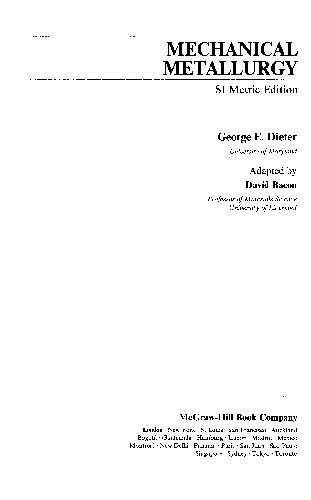
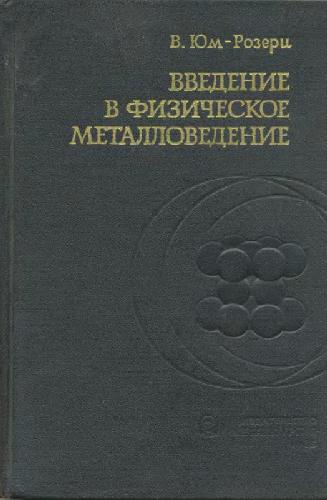
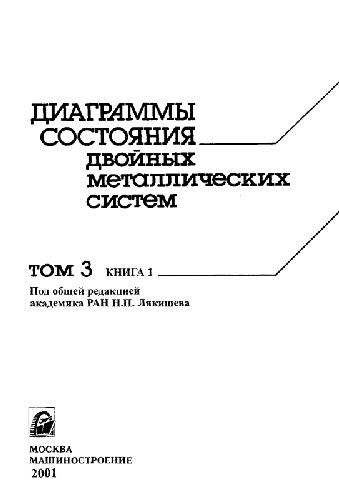
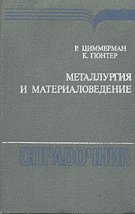
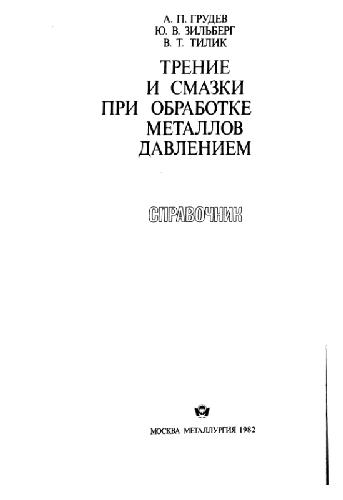
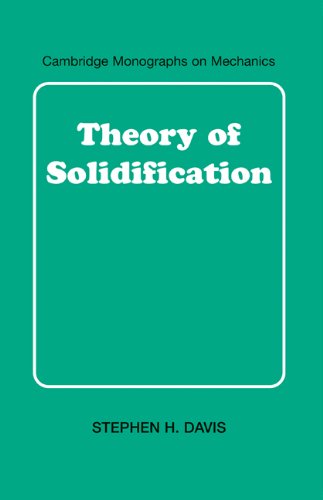
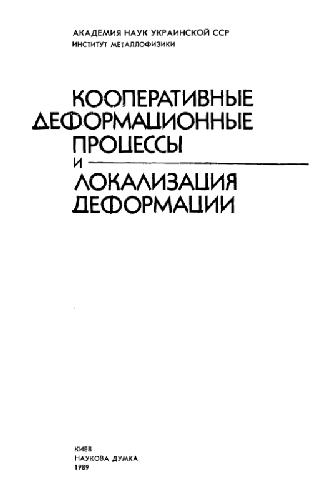
Reviews
There are no reviews yet.